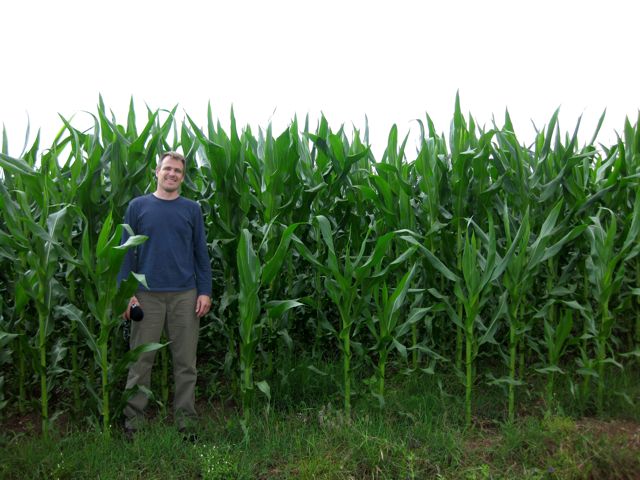
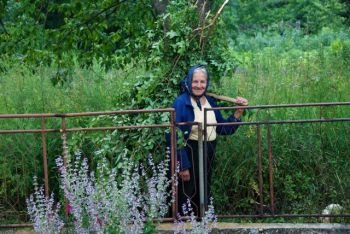 Ujna's neighbor stopped to pose for us
Ujna's neighbor stopped to pose for us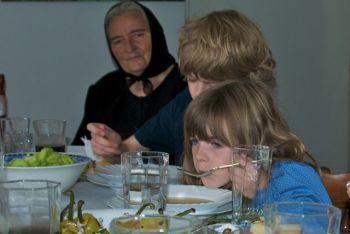

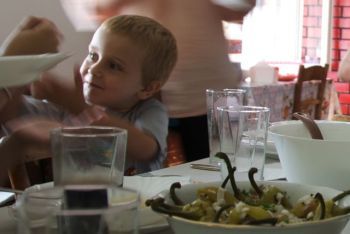
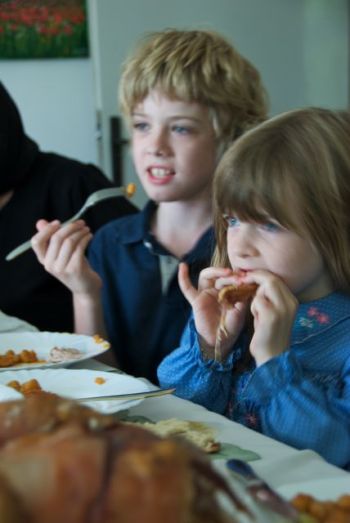 Ella eating a pig's ear
Ella eating a pig's ear
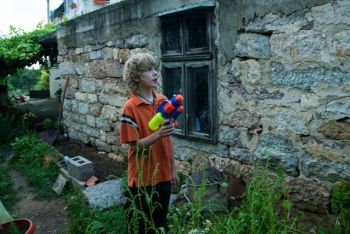 Squirtguns and boys need no translation
Squirtguns and boys need no translation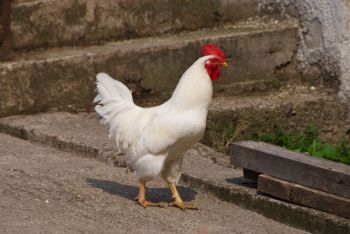
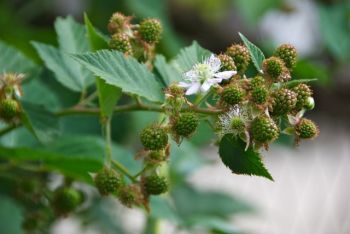 Bob wishes he'd be back when the blackberries are ripe
Bob wishes he'd be back when the blackberries are ripe The neighbor's still -- Good rakija!I grew up in a small Illinois farming town, the dentist's son. My knowledge of farming is limited to what I picked up by simply living near it. So near as a matter of fact that my backyard butted up against a corn field -- or clover or wheat, whatever was planted that season, but I fondly remember it as the corn field. Running up and down the rows and hiding was a favorite pastime when it grew taller than I was. I also remember all of the huge and very expensive farm implements around town. I'd overhear debates over whether John Deer or Massey Ferguson was the better tractor or combine or whatever it was the farm boys where discussing. Farm life toughened the farm kids up a lot faster than most of us town kids. They weren't the boys (or girls) you'd want to arm wrestle. So, when I say that life on a farm in Serbia isn't easy, I mean it in a whole different way than life on an Illinois farm isn't easy. The relatively small family owned Serbian farms we've seen don't have the economy of scale that's found in America's corn fields, family owned or industrial -- and no government is subsidizing anything! The sight of a widow dressed in black from headscarf to toe isn't an unusual one as we pass through the villages.
The neighbor's still -- Good rakija!I grew up in a small Illinois farming town, the dentist's son. My knowledge of farming is limited to what I picked up by simply living near it. So near as a matter of fact that my backyard butted up against a corn field -- or clover or wheat, whatever was planted that season, but I fondly remember it as the corn field. Running up and down the rows and hiding was a favorite pastime when it grew taller than I was. I also remember all of the huge and very expensive farm implements around town. I'd overhear debates over whether John Deer or Massey Ferguson was the better tractor or combine or whatever it was the farm boys where discussing. Farm life toughened the farm kids up a lot faster than most of us town kids. They weren't the boys (or girls) you'd want to arm wrestle. So, when I say that life on a farm in Serbia isn't easy, I mean it in a whole different way than life on an Illinois farm isn't easy. The relatively small family owned Serbian farms we've seen don't have the economy of scale that's found in America's corn fields, family owned or industrial -- and no government is subsidizing anything! The sight of a widow dressed in black from headscarf to toe isn't an unusual one as we pass through the villages.
Darinka's family farm is headed by her aunt, whom everyone in the village calls Ujna, which means aunt in Serbian. She has lived there since she was married at the age of 13, and she now does what she can since her husband died recently. The farm is a Garden of Eden! Gooseberries, currants, pears, plums, apples, strawberries, raspberries, mulberries, blackberries and grapes are everywhere. That's just the berry family. Then there's the garden: beans, carrots, onions, peppers, tomatoes, squash, corn. In the fields grow clover, corn, wheat, alfalfa... The soil is so incredibly fertile, I'm convinced that anywhere I've dropped a pear core or spit a fruit seed, next year a tree will spring up. Ujna is down to one cow now. When the house was full of three generations of families, there were more than a dozen cows I'm told. There are still pigs and chickens and goats, as well as a multitude of cats. It's a beautiful place, and it has the wonderful feel of land well tended for generations. Three people live there now -- Ujna her daughter-in-law Julija and her four year old grandson, Ilija. There's no way they can harvest all of the abundance that's just in the home garden. Much of the land has been loaned out to neighbors to farm. Julija, tells us that many people need to subsidize their farm work with other jobs or businesses -- the farms are mostly for food. The money comes from somewhere else. Sometimes a family member, often the fathers, will work in other countries and return home for a month at a time.
In spite of this, the generosity we've seen has been amazing. Lavish lunches have been prepared each time we visit. When you enter a home as a guest coffee is made, cake is brought out, and rakia (fruit brandy) is poured -- no matter what time of day. It seems everyone has a copper still or at least knows someone who has a still and puts all the excess fruit to very good use making very good brandy.
For all of the apparent differences, many of the concerns are the same as on a US farm. Some of the young people leave the farm to go into other professions, and I imagine Serb farmers have their debates over which is the better tractor or combine. Yesterday, we met a passionate farmer named Goran. He was one of a small number of farmers chosen from across Serbia to attend a global farming summit in the US last year. He's smart and forward-thinking and industrious, and quite a successful farmer. He says that Serbian farming will have to change to survive. He's got ideas and he's created a coalition of sorts. We all need more people like Goran.